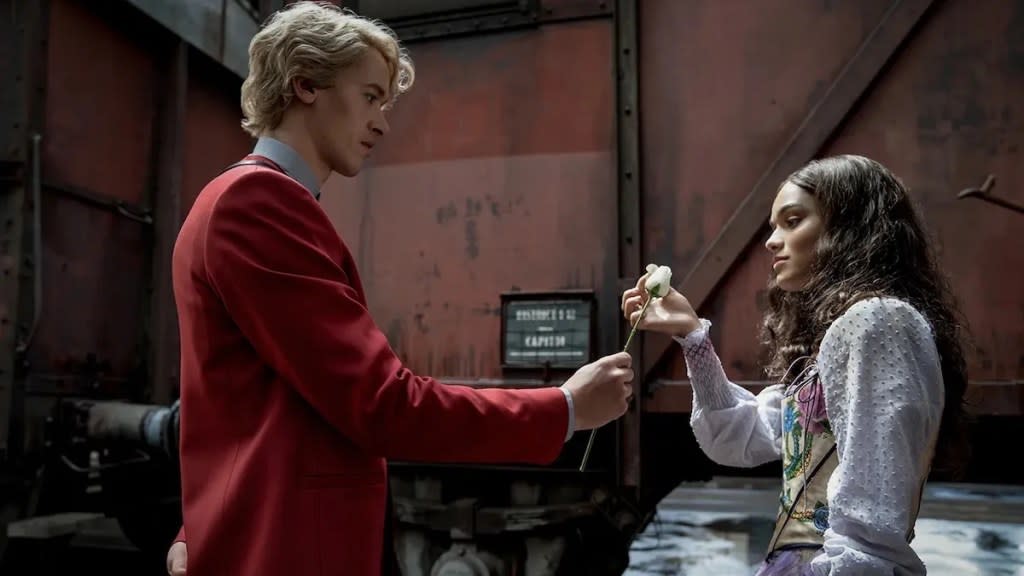‘The Hunger Games: The Ballad of Songbirds & Snakes’ Review: Overlong Prequel Is More Style Than Substance

- Oops!Something went wrong.Please try again later.
- Oops!Something went wrong.Please try again later.
It’s hard to pinpoint when exactly it became a thing, but in classically cinematic stories of good vs. evil it’s no longer enough to portray the complexities of the bad side. We now have to go back in time and understand the exact origins of evil. Was Cruella simply misunderstood? How about the Joker? Was he just unjustly treated?
In fairness, Coriolanus Snow, the tyrannical president of the dystopian Panem in the original “Hunger Games” films and novels, was never as one-dimensional as these aforesaid villains. But “The Hunger Games: The Ballad of Songbirds & Snakes” takes a page out of the playbook of their origin stories and gives us an adaptation of Suzanne Collins’ 2020 prequel novel with wildly mixed, overlong and clumsily paced results.
Directed by “Mockingjay Part 1 & 2” filmmaker Francis Lawrence, and written by Michael Lesslie (“Assassin’s Creed”) and Michael Arndt (“Catching Fire” and “Star Wars: Episode VII – The Force Awakens”), “The Ballad of Songbirds & Snakes” packs so much narrative and plot shifts within its runtime that once it concludes it gives the viewer the feeling that they’ve just seen three half-finished films of endless mythologies and fan-servicing nods to the original trilogy.
The saga opens with the period labeled “the dark days,” three years before the initiation of the annual Hunger Games, a survival game where each of Panem’s oppressed districts has to reap a tribute to participate in the live-or-die proceedings.
While the film is nearly three hours long, these dark days don’t claim that much screen time and linger just long enough for us to get a sense of the uprising against the Capitol, during which the citizens of Panem were impoverished to the point of feeding on one another. Fast forward to the year of the 10th annual Hunger Games—that is, some sixty years before the time of Jennifer Lawrence’s Katniss Everdeen and decades before Coriolanus took power (still with me?)—where we meet the young Snow, played with a fiery sense of coolness by Tom Blyth.
Coriolanus is dressed pristinely not because of his wealth and standing in the Capitol (his once well-off and respected family is barely scraping by), but because of his cousin’s refined and creative tailoring skills. Snow lives a double life in some sense, acting as a pillar of strength to his family at home and trying to fit in at his elite school of rich kids, torn between having a moral compass and a desire to do away with it in order to get ahead.
When he finds the future of his family threatened, he begrudgingly accepts an assignment to mentor a new tribute from the poor District 12 (where Katniss would later come from). She is the terrific Rachel Zegler’s mercurial Lucy Gray Baird, a bewitching and strong-willed young woman with a fascinating neck for showmanship, as well as Grade-A pipes (honestly, the best asset of “The Ballad of Songbirds & Snakes”) to captivatingly sing the familiar ballad, “The Hanging Tree.”
The film is immersive and entertaining in its earlier chapters when it leans into the growing closeness between the unruly and vividly dressed tribute and her kindly mentor as they jointly plant the early seeds of the kind of showy Hunger Games we came to expect in the series’ original installments. Ramshackle stages play host to these Hunger Games, and while a great Jason Schwartzman’s witty host Lucky Flickerman emcees the proceedings with zest (he is often exceedingly funny), the show itself is far from the opulent exhibition it would become later.
But Coriolanus discovers the event’s potential in no time: what if they integrated the audience in the games? What if each tribute was rewarded for earning the viewers’ real-time sympathies? Believing in Coriolanus’s promises, Lucy Gray plays along, and Lawrence deftly orchestrates and choreographs the bloody horrors and edge-of-your-seat thrills of the 10th game until its end, while the two fascinating characters embark on something more than just friendship.
The trouble is realizing at this point that there is still another hour and a half to go and Coriolanus hasn’t even started his transformation to the dark side yet. At the risk of sounding contradictory, the rest of the film both drags and somehow isn’t nearly long enough to sell such a shift in allegiances in a character we’ve come to like thus far but who will inevitably grow up to be Donald Sutherland’s autocratic ruler one day.
In that regard, and despite Blyth’s best efforts, Coriolanus’ sudden hunger for power and growing grudge against his friend Sejanus (Josh Andrés Rivera) never lands convincingly. We do get a number of compelling characters out of these increasingly convoluted machinations, among them is Viola Davis’ stylish villain Dr. Volumnia Gaul, the chilling Head Gamemaker with an affinity for multicolored, truth-telling snakes, and Peter Dinklage’s chaotic Dean Highbottom, a druggy loner with a tormented moral conscience. We also get some memorable set pieces, like one set in a hostile forest where Lucy Gray increasingly becomes suspicious of Snow’s darkening motives and vanishes into thin air.
In the aftermath, the taxing and bloated “The Ballad of Songbirds & Snakes” is the kind of film you will remember more for some of its individual scenes (and Trish Summerville’s dizzying array of impressive costumes), rather than its whole. The Hunger Games might be needed every year to show us who we truly are, as the deliciously icy Volumnia Gaul puts it in the film, but amid all its expensive spectacle, “The Ballad of Songbirds & Snakes,” unlike the stellar predecessors of the series, feels curiously starved for real insights into the opposing shades of the human soul.
The post ‘The Hunger Games: The Ballad of Songbirds & Snakes’ Review: Overlong Prequel Is More Style Than Substance appeared first on TheWrap.

